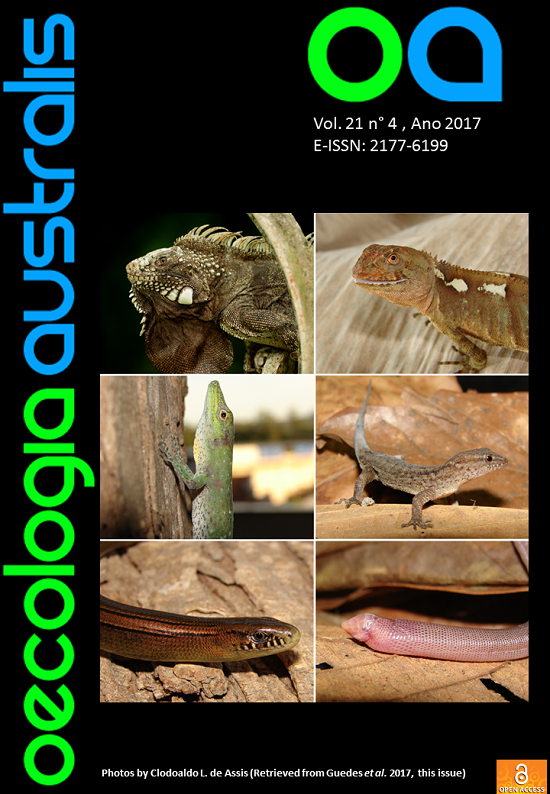CLIMATE-DRIVEN VARIATION IN SPACE USE BY THE NEOTROPICAL MARSUPIAL Metachirus nudicaudatus
DOI:
https://doi.org/10.4257/oeco.2017.2104.09Keywords:
food availability, movement, seasonality, small mammals, spool-and-lineAbstract
Climatic seasonality affects marsupial space use through changes in food, mate, and nest availability. These effects can be enhanced when population size has an additive effect in the dry season. We tested if daily home range area and intensity of habitat use of the marsupial Metachirus nudicaudatus is affected by population size, climatic (dry and wet), and reproductive (breeding and non-breeding) seasons, and if it differs between genders. Metachirus nudicaudatus space use was affected by climatic seasonality, with individuals exploring larger areas in the dry season, probably in search for food. No effect of population size or differences in space use between sexes was detected. Further studies should test experimentally the effect of food availability on marsupials space use to confirm or rebut this hypothesis.


